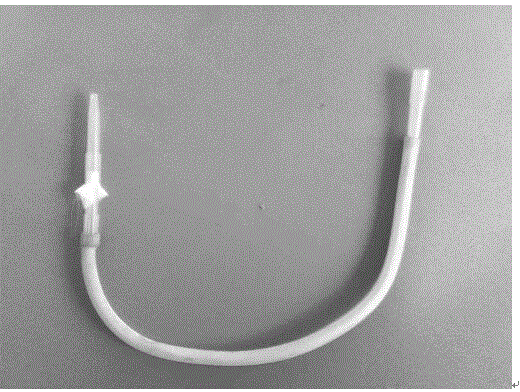Large-size predacious mite collection method
A collection method, a technology of predating mites, which is applied to the device for catching or killing insects, applications, animal husbandry, etc., can solve the problems of escape of predating mites, human and material resources, time consumption, and fast action speed, and achieve rapid and efficient operation The effect of the research method
- Summary
- Abstract
- Description
- Claims
- Application Information
AI Technical Summary
Problems solved by technology
Method used
Image
Examples
Embodiment 1
[0027] Method for collecting large predatory mites on vegetables (1): Fill a centrifuge tube with 75% alcohol at a concentration of 75%, which accounts for about 65% of the centrifuge tube. Predator mites will be immersed in alcohol, anesthetized and then killed, and then the centrifuge tube will be placed upright to avoid alcohol spillage, and then the specimen will be transferred to the liquid in the specimen tube used to preserve the specimen.
Embodiment 2
[0029] Vegetable large predatory mite collection method (2): According to the characteristics of predatory mites, dip a small brush with a certain amount of collection liquid. The ratio of the collection liquid is 25% 75% alcohol and 75% glycerin, and the capture is completed quickly. The specimen is then transferred to the specimen tube.
Embodiment 3
[0031] Vegetable large predatory mite collection method (2): According to the characteristics of predatory mites, dip a small brush with a certain amount of collection liquid. The ratio of the collection liquid is 50% 75% alcohol and 50% glycerin, and the capture is completed quickly. The specimen is then transferred to the specimen tube.
PUM
| Property | Measurement | Unit |
|---|---|---|
| Diameter | aaaaa | aaaaa |
Abstract
Description
Claims
Application Information
 Login to View More
Login to View More - R&D
- Intellectual Property
- Life Sciences
- Materials
- Tech Scout
- Unparalleled Data Quality
- Higher Quality Content
- 60% Fewer Hallucinations
Browse by: Latest US Patents, China's latest patents, Technical Efficacy Thesaurus, Application Domain, Technology Topic, Popular Technical Reports.
© 2025 PatSnap. All rights reserved.Legal|Privacy policy|Modern Slavery Act Transparency Statement|Sitemap|About US| Contact US: help@patsnap.com


